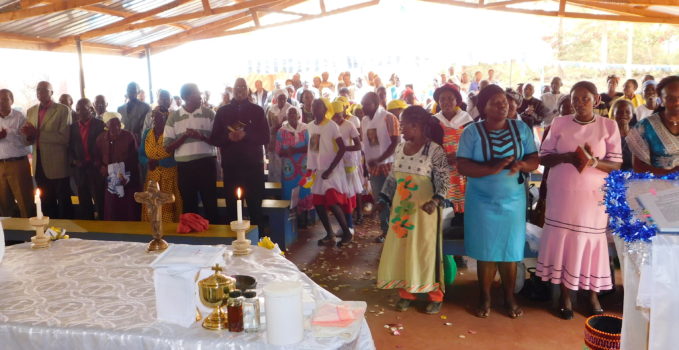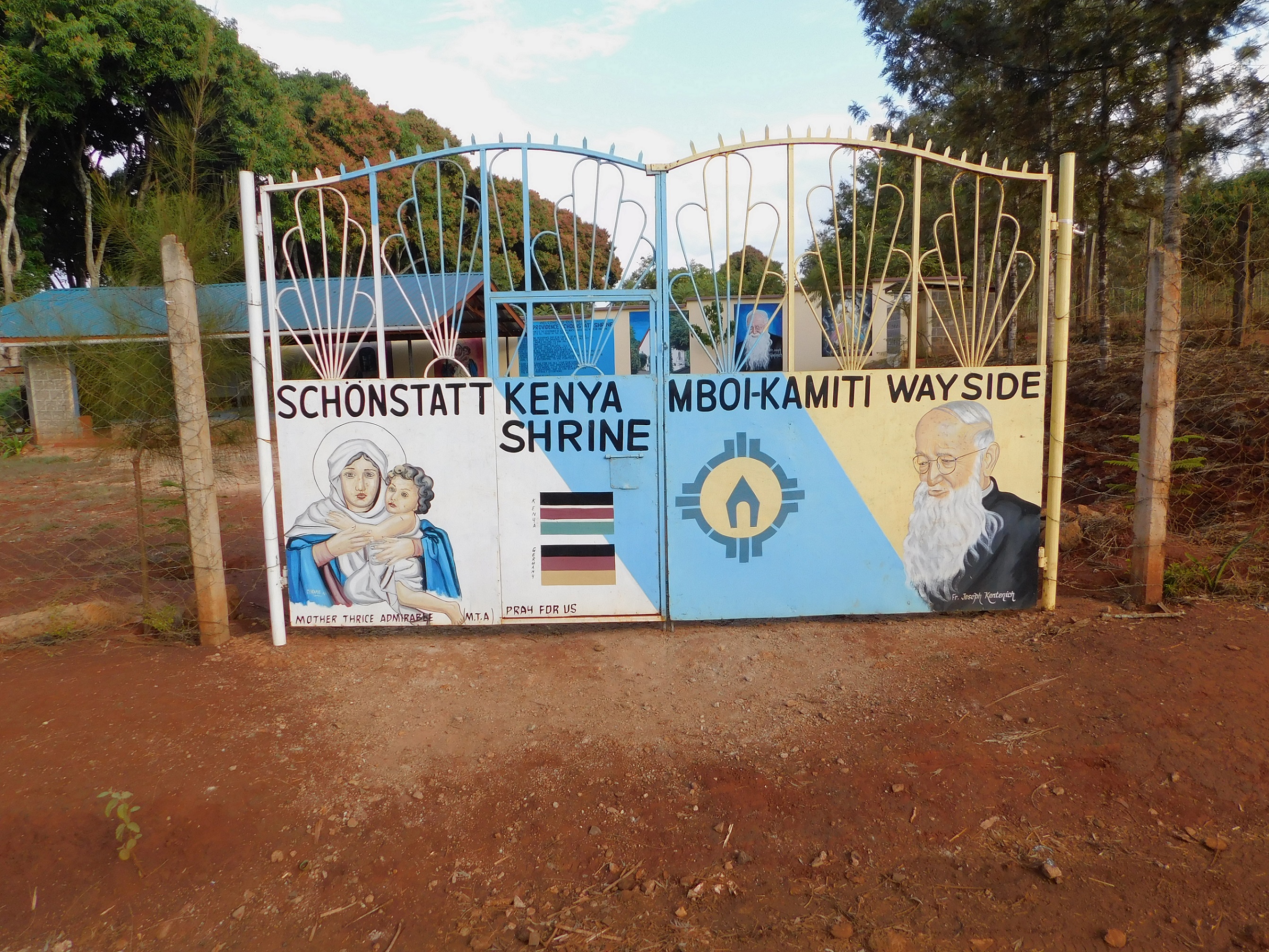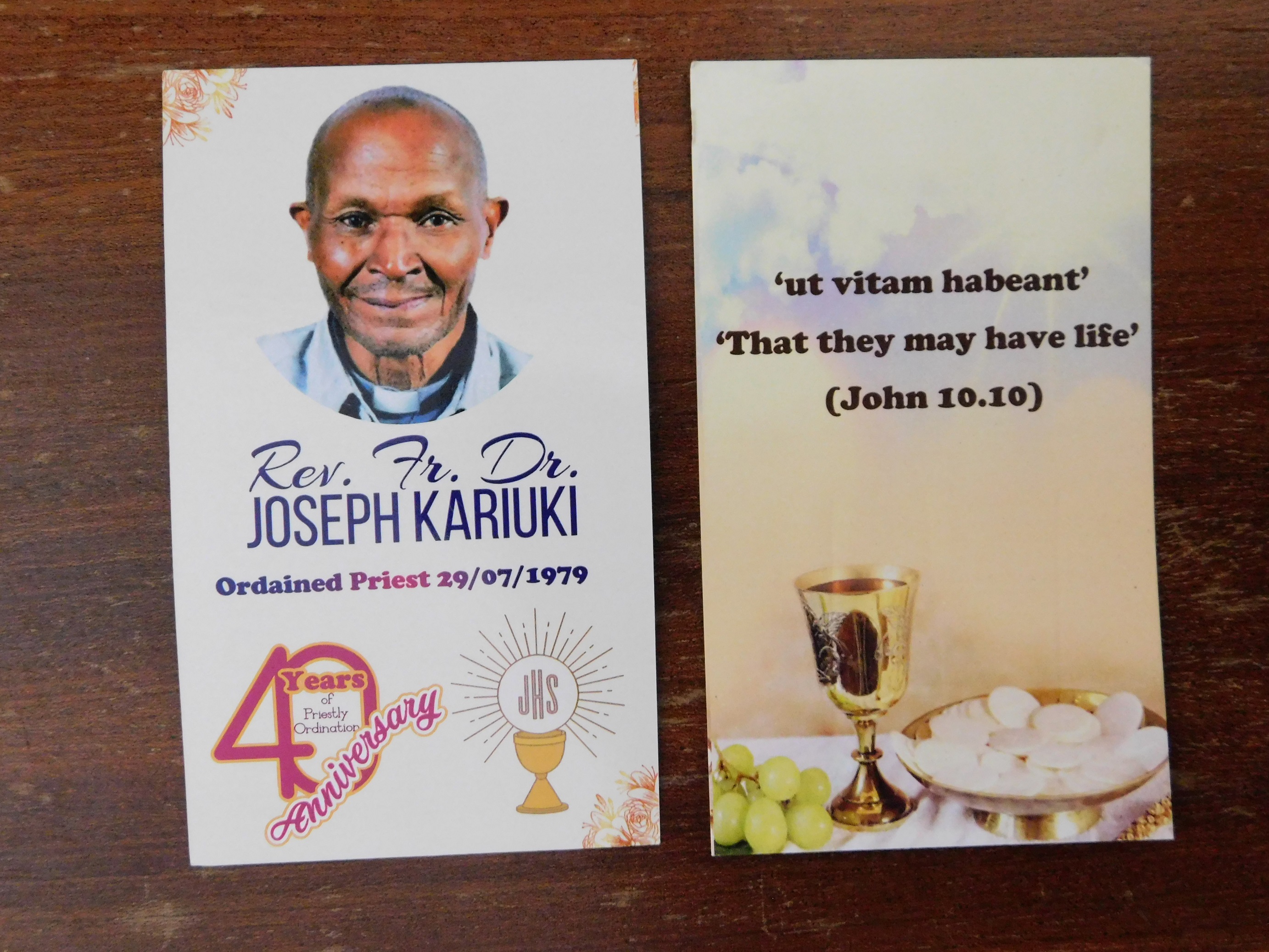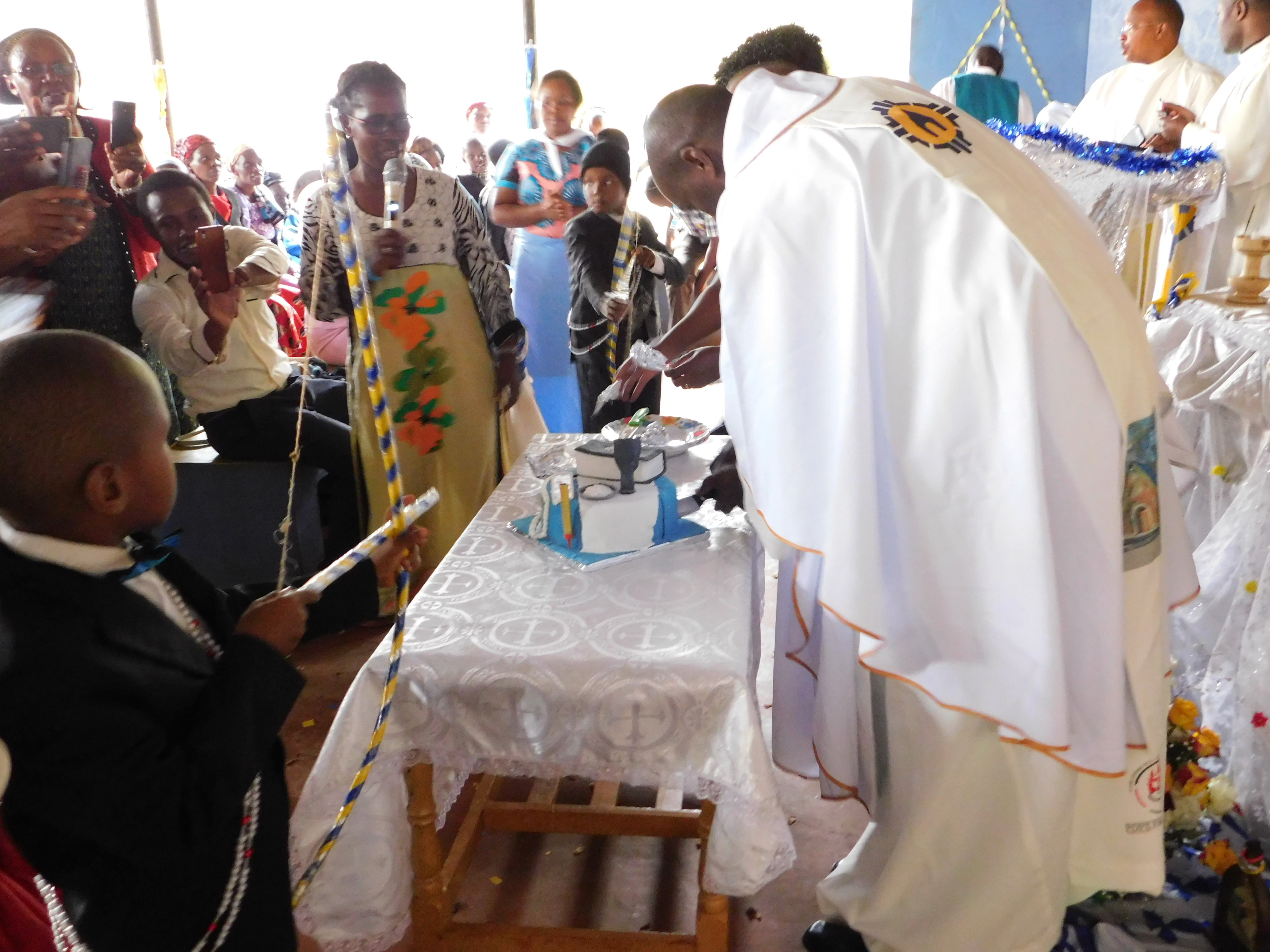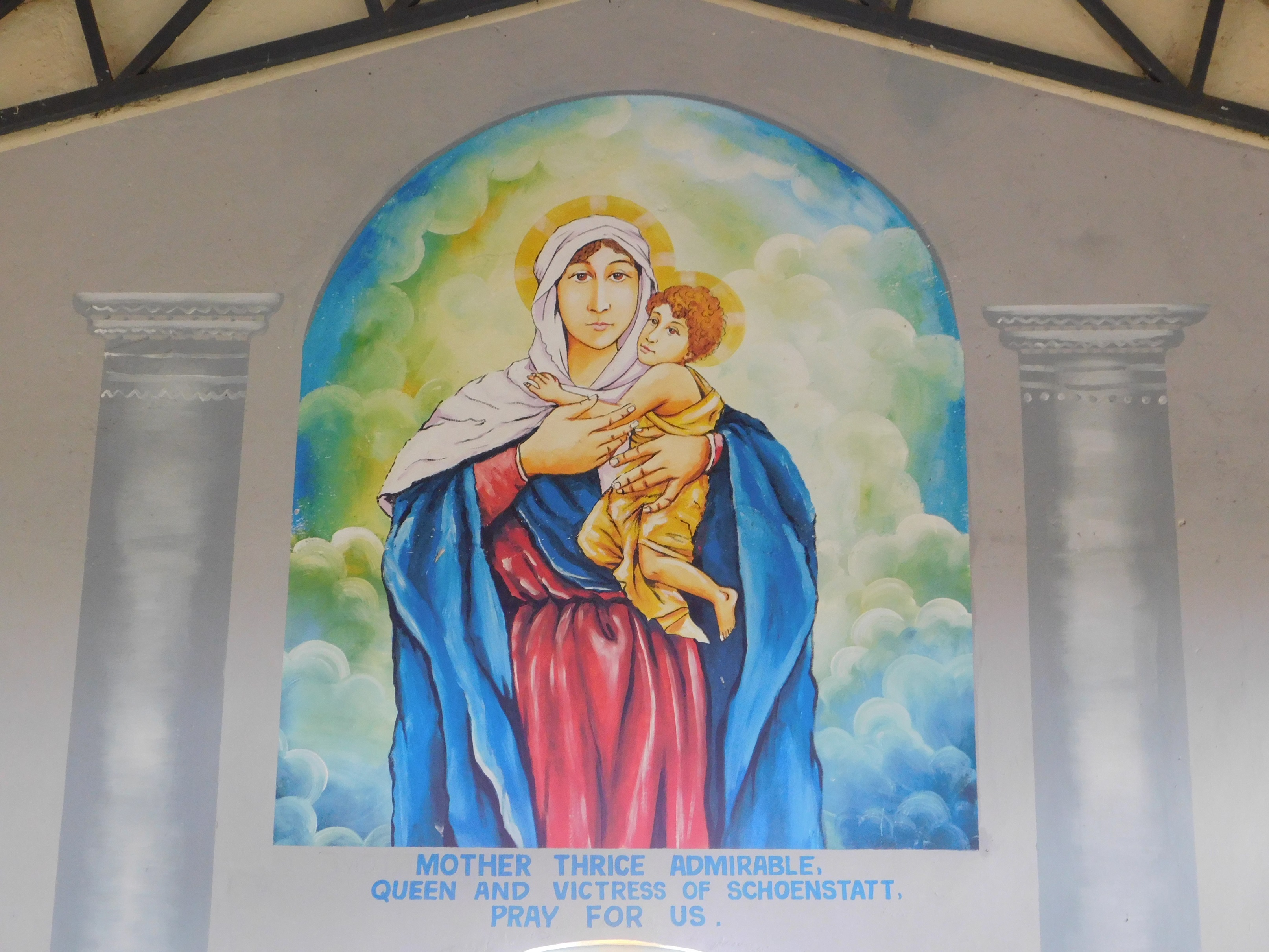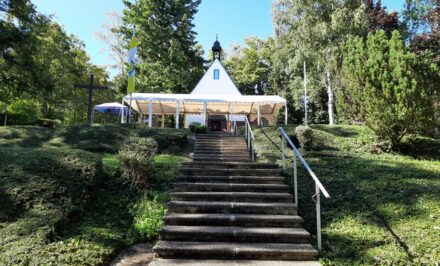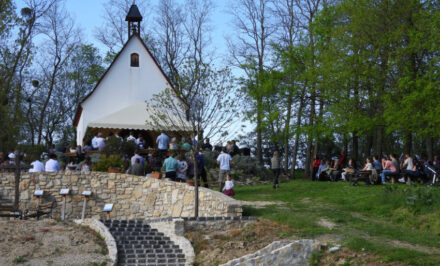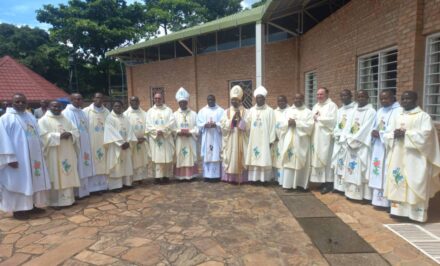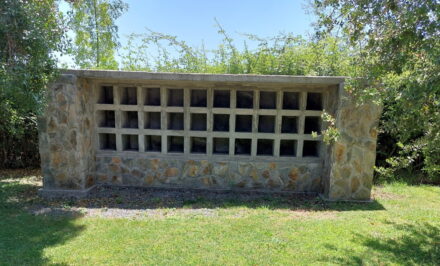KENYA, Fr. Reinhard Förster •
When I arrived at the Schoenstatt “Center,” everything was already decorated festively: flags and garlands, a tent was erected, and many people in festive clothes were on their way. Almost 200 guests came. Mass was celebrated with a dance group and a choir. All sang along enthusiastically. This is where 25 years of Schoenstatt in Kenya is celebrated, and on this day 40 years ago the first Schoenstatter of the country was ordained to be a priest, Father Dr. Joseph Kariuki Kamau. After the festive mass there will be many greetings and of course a cake for the person celebrating their jubilee and food for everyone. Then everything stops again, as the dark comes on soon and the way home is long. —
But let’s say it again in more detail. On Saturday evening I arrived in Nairobi, Kenya, from Nuremberg via Zurich. Two priests, Joseph Kariuki and Simon Kaire, picked me up at the airport. It’s about 80 kilometers to the north. I stay in the Beatitude Christian Formation Center because there is no water in the parsonage. It didn’t rain enough and now the tank is empty.
Mango Shrine
On Sunday, July 28, 2019, I was able to walk with two Schoenstatt Sisters of Mary to the Schoenstatt “Center” of the diocese of Murang’a. The bishop gave the Schoenstatt Movement a piece of land. It is about four kilometers from the main road, not far from Maragua. A new sign was put up at the junction a few years ago. From here you follow the unpaved and often dusty road. Every first
Saturday of the month the Schoenstatt Family of the diocese of Murang’a meets here. Until a few years ago, an MTA wayside shrine stood here near large mango trees: a concrete column with a bronze plate. It was often simply called “Mango Shrine”. Beside it, a roof was built for the altar and a roof for the worshipers. Cars often used the site as a shortcut.
It was only noticed that the piece of land is much smaller, when the neighbor started using his property properly and built a wall. The toilets had to be rebuilt elsewhere. The wall from the neighbor was allowed to be painted. A painter was commissioned to paint a large picture of the MTA, Joseph Kentenich, the Shrine and other things on the wall. This provided an opportunity for the movement leader, William Kamau, to build a permanent altar and a permanent roof.
The wayside shrine was integrated into the altar wall.
For the visitors there are fixed benches made of concrete. The whole thing is protected by a tin roof.
Every first Saturday of the month, the Schoenstatters gather on the main street and go to the wayside shrine while saying the Rosary Prayer. For years, one man has been making sure that the case for mass and everything else is there. Before Mass there is an opportunity for confession. The center was surrounded by a fence and a real gate was built. As it is not locked, other groups also come to pray.
Festive and warm
As soon as I arrived, some Schoenstatters warmly welcomed me: “It’s wonderful that you are here”, “Welcome home! I myself have often celebrated Mass here with other priests or alone.
Everyone is invited at 14 o’clock. It starts punctually for local conditions – only a few minutes later. Today seven priests arrived, among them Vicar General Charles Kibe of the diocese of Murang’a, who also presides over the Mass. A dance group of the PMC (Pontifical Mission Children) with their uniform yellow-red-white was present and danced the processions in the divine service. In Germany PMC are the star singers, which normally come in January. Here in Kenya the children are organized in groups that meet throughout the year.] Thus the entry of the liturgical ministry is very celebratory, as is the procession of the Gospels and Gifts. Because almost everyone here belongs to the Kikuyu tribe and some have trouble with other languages, their mother tongue is also used at the celebration, so that I don’t understand everything. There are representatives from many parishes of the diocese, even some from Nairobi. Today many more have come than usual. Therefore, a tent with many plastic chairs was erected.
I am surprised and particularly pleased to be able to be part of it. The last few years I have only been on holiday during the second half of the planned summer holidays. I was not aware that my brother was celebrating his jubilee before the trip or that it was the anniversary celebration of 25 years of Schoenstatt in Kenya.
Slow Growth
 Schoenstatt began in the parish of Mugoiri. Joseph Kariuki was parish priest for the second time. Two other priests were invited by him to Schoenstatt on their way back from the USA. Both supported the start of the Movement. Bishop Peter Cairo also gave his approval. Joseph Kariuki had known the Schoenstatt Movement for a long time.
Schoenstatt began in the parish of Mugoiri. Joseph Kariuki was parish priest for the second time. Two other priests were invited by him to Schoenstatt on their way back from the USA. Both supported the start of the Movement. Bishop Peter Cairo also gave his approval. Joseph Kariuki had known the Schoenstatt Movement for a long time.
As a professor at Kenyatta University, he regularly helped out with Sunday services in his home diocese. He used this opportunity to train the Schoenstatters. So here Schoenstatt has slowly grown in the way typical of the country. It was based on known traditions and supplemented by the mission of Schoenstatt.
Many members are farmers, i.e. people with the most basic education.
There was also a group of diocesan priests who sealed the Covenant of Love and met again and again. Some of this group have already died.
Every year a diocesan priest from the Schoenstatt Institute took time to come to Kenya. At first this was Balthasar Blumers, then a vocational school teacher, after Christmas and at the beginning of January. There were also two English-speaking brothers, Fr. Denis Foley from Australia, who died recently, and Fr. Michael Savage from Scotland. Then, at the invitation of Joseph Kariuki and Balthasar Blumers, I spent my holidays here to improve my English. This has turned into annual holidays. A few years after the foundation a sister came from the province of South Africa. She made annual visits here and in Nigeria. Over time, the Sisters of Mary have found candidates for their community of Sisters. There are now three sisters from Kenya. Two of them were able to attend the celebration. The sisters’ community bought a piece of land here about three years ago.
Schoenstatt, something good for priests – and all the others too
Pretty quickly, there were individual Schoenstatt members in Nairobi. These were mainly people from the diocese of Murnag’a who had found work and housing in the city. There were time and again groups of students. There was a lot of detail work by some very faithful members. A lot has gathered around Mrs. Monica Kimani.
I myself met with priests from Meru, almost 300 km north of Nairobi, directly on the equator. I visited them again and again. Slowly they grew into the Covenant of Love with the Blessed Mother. In the beginning in Meru it was called “Schoenstatt is something good for priests”. In the meantime there are small Schoenstatt groups in some parishes. It became clear to me that some priests have taken the MTA to their hearts when I found the picture of the Mother Thrice Admirable on a wall in a parish and then also in a parish church. The priests meet very regularly.
On the border to Uganda
Then, since the last few years, there has been Schoenstatt in the diocese of Bungoma, about 500 km from Nairobi on the border with Uganda. Schoenstatters from Nairobi and the diocese of Munrag’a go there again and again for a weekend seminar (mostly by night bus). I was there myself once. This is Kisuaheli Church, because there are two tribes with different languages. So they agreed on a common third, which everyone understands. Joseph Kariuki was called upon to attend the seminary near the city as a teacher of philosophy. He was only there for a short time when the Vicar General invited him and others to present Schoenstatt in his parish. He himself had already met Schoenstatt outside the country.
A life and a life’s work
Exactly 40 years ago Dr. Josef Kariuki Kamau was ordained a priest in his native town of Murang’a, exactly on July 28, 1979. He was sent to Rome with other seminarians to study. His classmate was John Cardinal Njue. After his philosophical and theological studies, he received his doctorate in Fribourg, Switzerland, in 1977. Here he got to know Schoenstatt. As a priest he became a member of the Schoenstatt Institute Diocesan Priest in 1990. He learned a lot about fatherhood and trust from his brother Werner Krimm.
After his ordination, Joseph Kariuki was bishop’s secretary in Nyeri. He was then the first local priest in Mugoiri. From there he went to Nairobi and built up the Catholic University together with others. He was vice-rector. After a sabbatical year he became pastor again in Mugoiri. During this time he founded Schoenstatt in Kenya together with others. Then he became professor of philosophy at Kenyatta University. All students had to attend the course “Critical Thinking”. On the weekends he regularly helped out with church services in his home diocese. On this occasion he trained the Schoenstatters.
In 2009, he was in the USA for a good year. It was there where he wrote his book “Human Development as Integral Development. The Social Teaching of the Church in the Light of the Social Education and Ethics of Joseph Kentenich in an African Context” (The Catholic Social Doctrine in the Light of Human Education and Ethics of Joseph Kentenich in the African Context). Upon his return to Kenya, he became a philosophy teacher at the Bungoma Seminary. A year later he became the second priest in Kenyanyni. The last two years he was the second priest in Sabasaba. Many Schoenstatters consider him to be the founder and director.
The feast comes to an end… and Schoenstatt continues to grow.
There was naturally a cake for the party. For such a priest it had to be something special: A cake with a Bible, chalice and host bowl with a sparkler. Of course, the jubilarian had to cut the cake. The Vicar General also had to hold the knife. This time there was even a protection troop: two boys with bow and arrow.
Then the cake was cut into many small pieces. “The feeding” is very important and must be viewed by all: The jubilarian must feed a piece of cake into the mouth of special persons: first the Vicar General, then the jubilarian is fed by the Vicar General, then important persons. I have also heard about this. Then the cake is handed out to everyone. And customary in the country: food for everyone.
Around 6:00 p.m., the first ones left. Many have no car and are dependent on Matatus (minibuses, up to 14 official seats). Here it is pitch dark at 19 o’clock.
The African night is upon us. The festival ends. Schoenstatt in Kenya continues to grow.
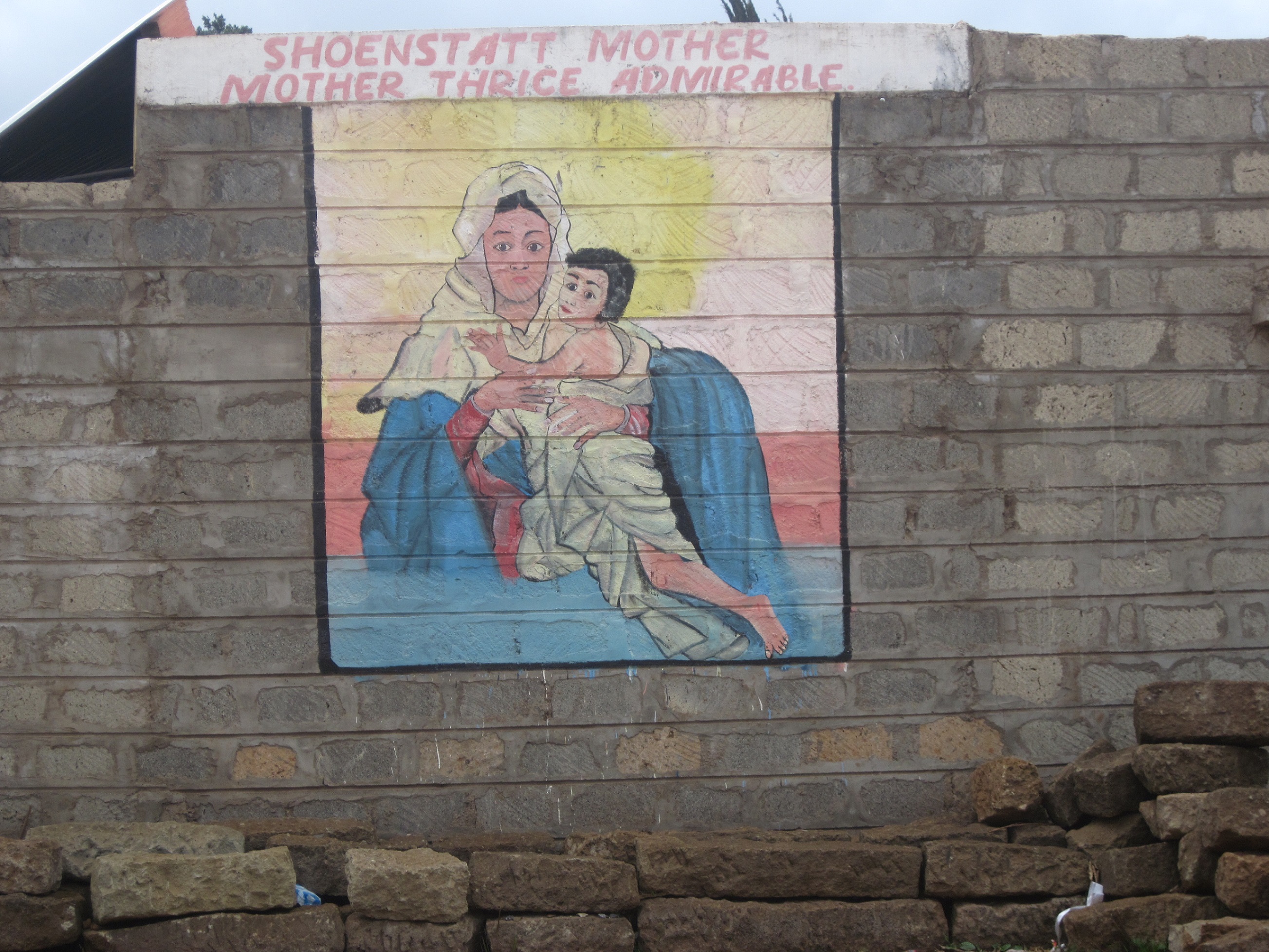 Photos : Reinhard Förster
Photos : Reinhard Förster
Original: German, 02.08.2019 Translation: Lindsay Burger, Ohio, USA


